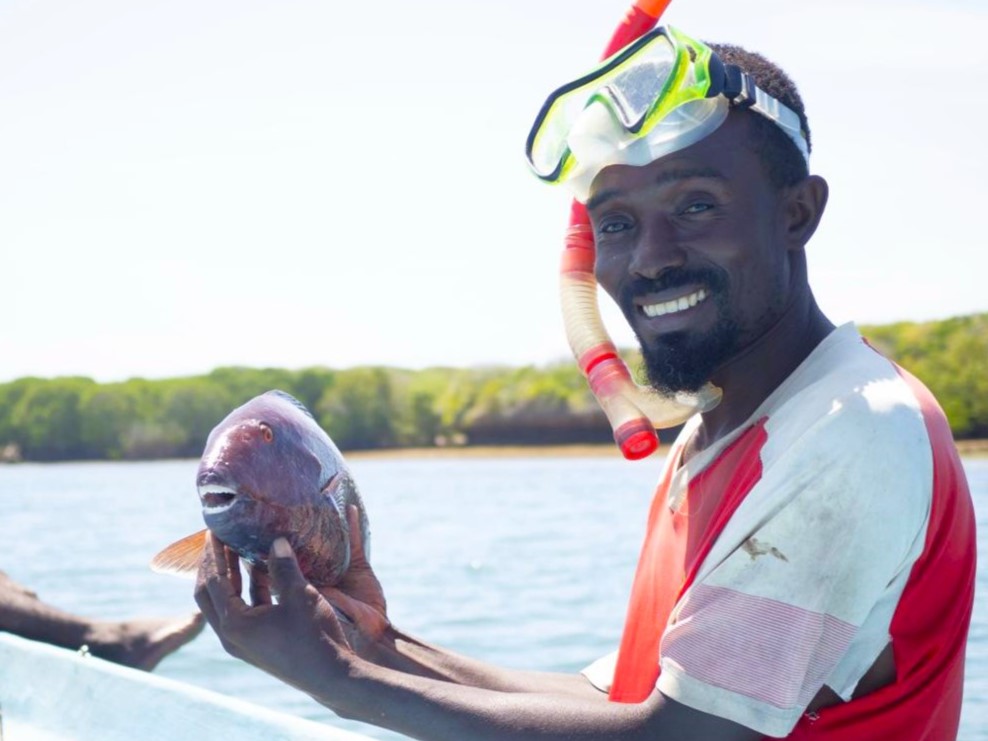Creating a market that rewards sustainability

Mursal Mohammed from Kiwayu Beach Management Unit with his sustainably caught fish. Credit - Ali Kaka.
Building a sustainable future for small-scale fisheries
Introduction
Operating in the northern coast of Kenya, the ‘Fish-to-Market’ (FTM) programme set out to address a pressing dual challenge: improving the sustainability of small-scale fisheries while safeguarding the livelihoods of the coastal communities who depend on them. The stakes were high: local fisheries faced mounting pressures from overexploitation due to a growing number of fishers and increasingly rough seas likely linked to climate change; unselective fishing gear and low fish stocks further compounded the crisis.
It was clear from the outset that grant funding alone could not resolve these structural issues: to create a lasting impact, we needed to go beyond traditional conservation approaches. Instead, we needed to build a financially sustainable model that empowers local people to keep a fishing-based livelihood while improving its sustainability. By integrating enterprise development with ecological stewardship, we laid foundations for a future where people and oceans thrive together.
Forging partnerships for long-term impact
Our innovative approach was to integrate a private sector actor directly into our project’s design. The consortium - led by Fauna & Flora, with Northern Rangelands Trust, and in collaboration with The Nature Conservancy and two community conservancies (Pate and Kiunga) - partnered with Kumbatia Seafood, a seafood company committed to sourcing sustainably. This was not a simple agreement; it required extensive and careful discussions to find alignment across the actors involved. We have developed formal sourcing agreements with Kumbatia that give local fisherfolk, using sustainable fishing and fish-handling methods, access to a premium market. This collaboration is key to making our project scalable and less reliant on grant funding.
To build trust and secure buy-in, we engaged communities through their Beach Management Units with oversight from Pate and Kiunga Conservancies. This ensured that agreements on pricing, target species, and fishing gear standards were co-developed with the very people they would impact. While we had a draft formal Memorandum of Understanding, we ultimately chose a more flexible, collaborative model. This flexibility proved crucial for adapting to the dynamic market and the communities' evolving needs, a key lesson we are sharing with other projects.


Empowering communities and securing a sustainable legacy
The financial outcomes have been a powerful testament to the success of our model. By the end of the project in March 2025, the Fish-to-Market programme had onboarded 319 members (81 women, 281 men) registered with the partner Beach Management Units. These fishers reported increased catches with more sustainable fishing methods, capacity to access richer fishing grounds to catch more pelagic fishes, and apparently fewer hours spent fishing.
The volumes sourced via the FTM programme went from 35.4 tons (in early 2024) to 135.4 tons (in early 2025), which ended up generating 24.77 million Kenyan Shillings (KES) (£140,000) for the registered fishers. It is noteworthy that most of the catches recorded were from pelagic fish species, especially tuna and tuna-like species caught offshore beyond the reef where most of the fishing pressure was historically exerted by artisanal fishers. This direct economic benefit created a strong incentive for adopting and maintaining sustainable fishing practices. The premium prices agreed by Kumbatia Seafood when buying acted as a powerful incentive, ensuring that our conservation efforts were not just theoretical but tangibly rewarding for the community.
"Sustainable practices have led to increased market prices."
Mursal Mohammed, a fisher from Kiwayu, shared that the project taught him that "Sustainable practices have led to increased market prices... My income has doubled, selling fish at KES 350 (approximately £2.02) per kilogram compared to KES 150 (approximately £0.86) before." Abuu Bwana, a member of the awareness team in Kiunga, echoed this, noting that prices for sustainably fished produce now earn between KES 200-350 (approximately £1.15 - £2.02) per kilogram, up from KES 150 (approximately £0.86). "The community now believes that sustainable fishing truly works," says Bwana.
Beyond the fisheries markets, our project also focused on enhancing financial resilience for women and youth in the community. Through microfinance and entrepreneurship training, we cumulatively disbursed loans amounting to KES 14.2 million (approximately £81,777.80) to 402 women and youth, helping them start and grow their own businesses, most of which are linked to artisanal fisheries. This led to a significant increase in self-reliance and improved living standards, with 80% of beneficiaries reporting a 30% average increase in their income. This empowerment directly led to greater community engagement in conservation activities like mangrove restoration and protecting marine turtles.
The project's legacy is more than just the statistics – it lives in the transformed mindsets and practices of coastal communities. We've seen a shift in behaviour. As Shaibu Mmadi, former chairman of the Ishakani Beach Management Unit, explains, his journey began when he transitioned from destructive beach seines [nets] to sustainable hook-and-line fishing. "The time I spend fishing has significantly decreased since joining the programme," he shares, "yet I still enjoy a good catch." He adds that the motivation is clear: "We are motivated to do sustainable fishing to satisfy the market standard and benefit from good market prices."
However, just like any other new practice, FTM has faced its fair share of challenges. Most fishers found it gruelling to maintain high standards of hygiene and quality checks. Some were even sceptical about the benefits of the programme. Furthermore, leaving behind traditional fishing practices and gears to adopt sustainable ones is a demanding process.
However, fisherfolk now exercise direct stewardship over both their economic and environmental future, empowered by a market that rewards sustainability rather than exploiting fishers. The project's activities influenced businesses, like Kumbatia, to create more nature-positive operating models. We left behind a blueprint, and a sustainable and scalable legacy: a model where marine conservation and economic prosperity are not opposing forces but mutually reinforcing goals. The lessons and invaluable experience from this 3-year project are informing our expansion of the Marine Programme as we venture into Kilifi Seascape with a vision of transforming fisheries management into the wider North Coast of Kenya.
Written by Jeniffer Adero and Joshua Oginda with technical input from Lenice Ojwang’ and Tanguy Nicolas. For more information on this Darwin Initiative Main project 29-008, led by Fauna and Flora International, click here.





 Back
Back